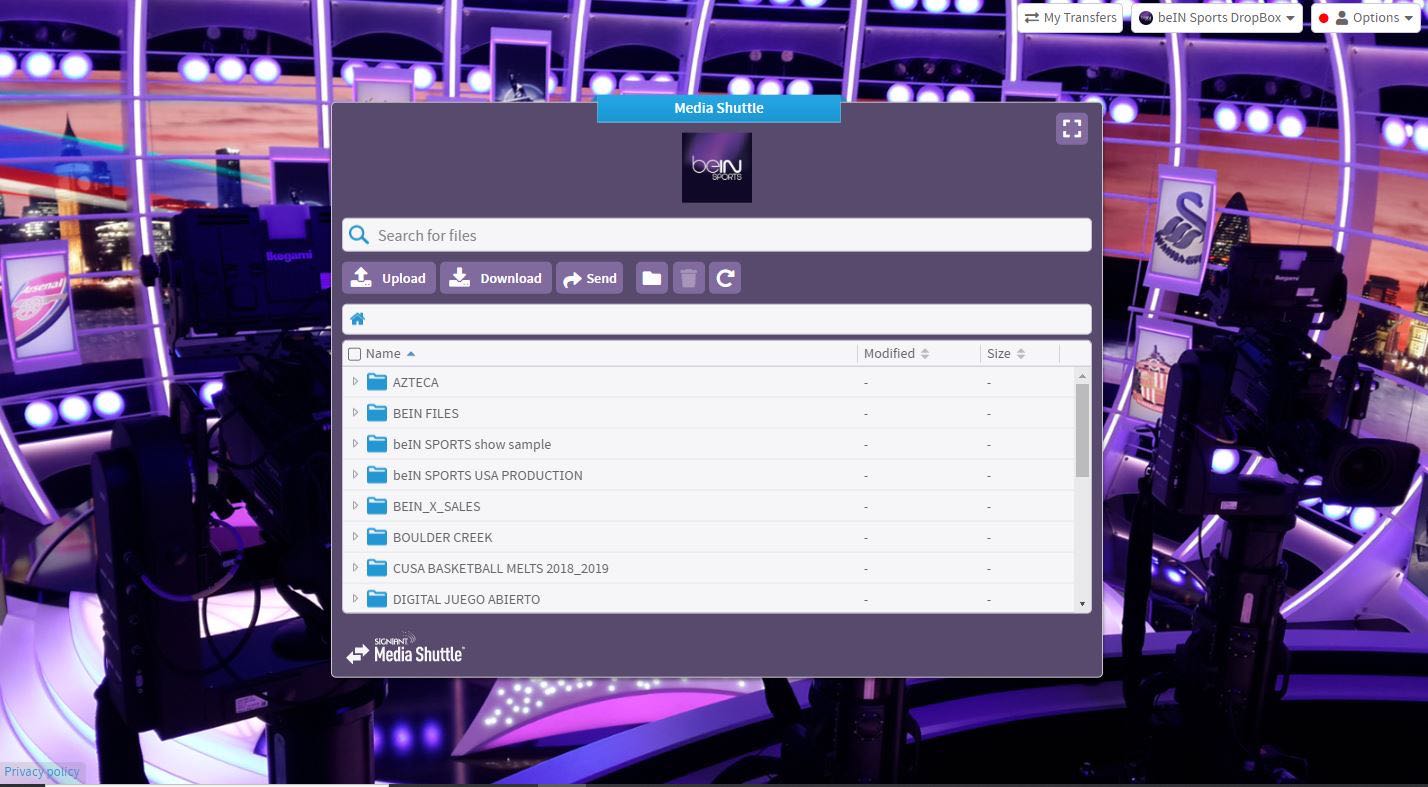Enhancing Live Sports Production
How broadcasters leverage intelligent file transfer software in the remote era
When we think about media production for global sporting events we generally think about the “live” action. However, a surprising volume of file-based content is generated by broadcasters before, during and after the live event, including highlights, segments, studio components and more. For fast-turnaround content during the game, broadcasters often transfer footage to central headquarters for editing, formatting and packaging. From there it might flow to various digital media outlets or even back to the venue for insertion into the live game feed or to be played on the jumbotron.
This production model rests on the ability to transfer huge amounts of data, whether large files or many small clips, in a fast, secure and reliable manner. Traditional methods present significant challenges when moving large amounts of data and can add huge risk to the tight timelines of sports productions.
While these trends were already moving forward, the COVID-19 pandemic has accelerated the adoption of remote production significantly, forcing leagues and broadcasters to adapt quickly to do more with many fewer people on site. Thanks to advances in bandwidth and in intelligent file transfer software, the industry was able to adapt quickly and many of the new workflows look to stay for the long term.
Automated file acceleration technology at major sporting events
Automated file acceleration software, such as Flight Deck, has long served as the backbone for the delivery of content from OB trucks to and from headquarters, quickly and securely moving large volumes of data. Before the game, things like graphic elements and produced segments from the studio are delivered to the truck for use during the game production. After the game, the “melt file” consisting of the most relevant content is transferred back to headquarters for access by content producers and for archiving. More recently, as advanced software has added support for working with growing files, that content can be delivered over standard IP networks as it’s being captured in near real-time.

During the game, these fast-turnaround workflows generate staggering amounts of data that can only be accommodated with a highly automated, accelerated file transfer solution.
For example, just one OB truck at a six-hour game might generate 2,000- 2,500 clips, with larger weekend-long tournament events generating up to 40,000 clips from multiple trucks. Using automated file acceleration technology, broadcasters can ensure that the content is steadily flowing out of the truck and back to headquarters, where it can be available for use almost as immediately as it is captured.
In addition, for MRLs (Media Rights Licensees), the right clip can add tremendous value to their broadcast whether showing highlights during a halftime show, revisiting previous plays during a post-game recap, or enhancing their social media presence. With more bandwidth now available at the venues — along with the right software — getting clips from the trucks out to licensees quickly is easier than ever, which can enhance the value of a local broadcast, ultimately leading to more revenue opportunities.
Person-initiated file acceleration for mobile teams and fly-away kits
In addition to the live production team, broadcasters sometimes use small, mobile teams with fly-away kits for ancillary coverage throughout large sports events. These teams gather everything from athlete interviews and fan footage to event-related news and local color stories for online, social and mobile platforms as well as for filler on network and cable channels, local TV stations, in addition to the live broadcast.
To keep their gear lightweight and remove the need for onsite technical personnel, mobile teams often turn to SaaS-based file acceleration solutions like Signiant Media Shuttle for person-initiated transfers for the file-based elements of their work. Anyone on the mobile team can easily send clips and edited segments from the venue back to headquarters.

In fact, many broadcasters will only utilize mobile teams and fly-away kits for smaller events because a team of journalists with laptops can achieve enormous resource savings compared to using traditional OB trucks. Mobile teams are also a vital secondary or backup source of content in regions where there may be uncertainty around getting access to sufficient satellite or terrestrial connectivity for a live feed. With only an Internet connection and a solution like Media Shuttle, mobile teams can transfer footage back to permanent facilities without technical assistance. Even in remote places, intelligent file acceleration solutions can make the most of poor Internet connection.

Signiant Media Shuttle end users can securely and easily get remote access to or share any size file, from anywhere in the Internet connected world. Signiant’s patented file acceleration technology moves files at speeds up to 100X faster than standard methods such as FTP without any restriction on file size.
Pioneering use cases for file-based content
Sports entities were among the first to embrace Media Shuttle, Signiant’s cloud-native SaaS solution for person-initiated file movement, when it launched back in 2012, the first of its kind. The product’s intrinsic ease of use and ease of deployment align perfectly with the time-sensitive, unforgiving nature of live sports production. In fact, one of the first significant pilots of Media Shuttle was in 2012 at a high-profile sports tournament, when the production team from a major broadcaster had a late-breaking requirement for extensive file-based content transfers. Since then, it has become the de facto standard for person-initiated transfers of large data sets and is used by all sizes of media companies for everything from feature film and episodic television to VFX and AR/VR, while sports broadcasters continue to be early adopters of new features and APIs, a trend which an increase in available bandwidth will only further facilitate.
For example, the Media Shuttle System-to-Person Automation API has opened up new workflow integrations that are particularly applicable during large sports events to help automate contribution and distribution workflows. This API allows broadcasters to automatically receive selected content triggered by events in other systems using Media Shuttle’s accelerated transfers. Broadcasters can create automated workflows that distribute content to people and/or request that people submit content directly into their systems, a huge benefit during time-strapped sports production.


